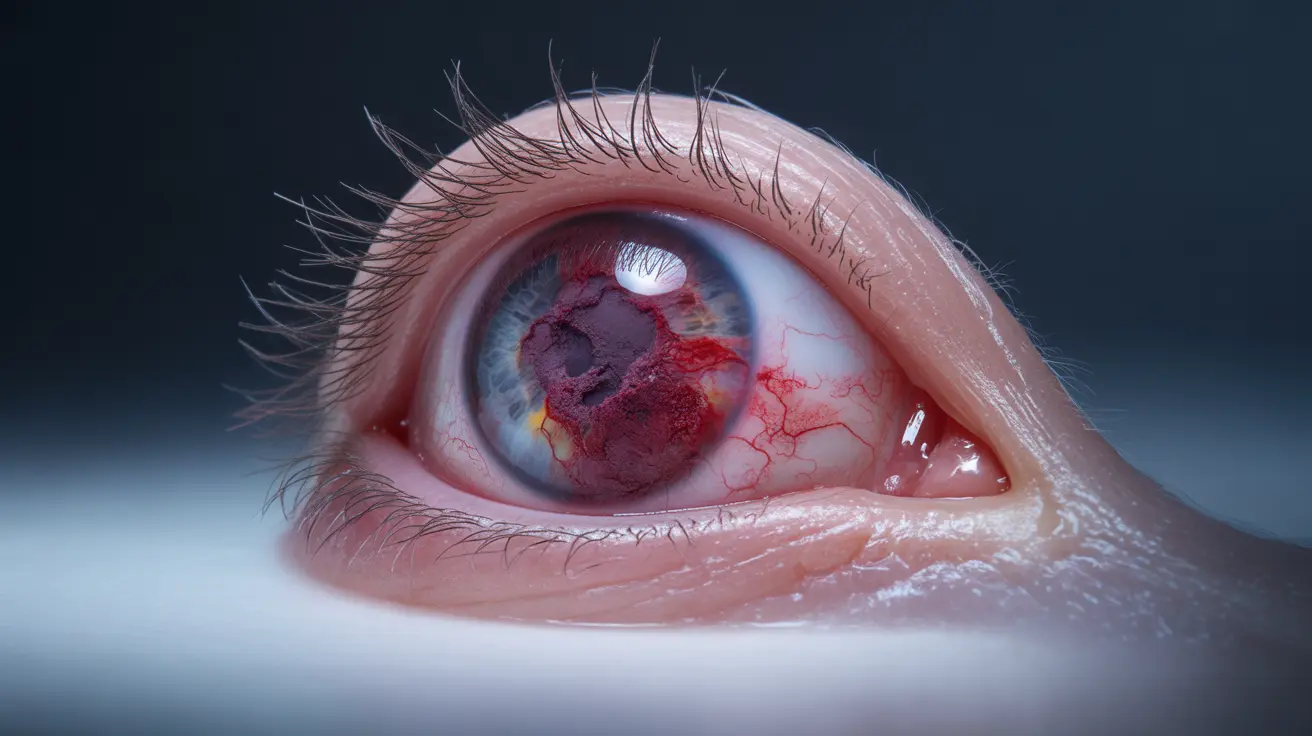Acute hemorrhagic conjunctivitis (AHC) is a highly contagious eye infection that can cause significant discomfort and concern for those affected. This condition, characterized by sudden onset of eye inflammation and bleeding beneath the conjunctiva, requires prompt attention and proper management to prevent complications and transmission to others.
While AHC typically resolves on its own within 1-2 weeks, understanding its symptoms, treatment options, and prevention methods is crucial for both affected individuals and their caregivers. This comprehensive guide will help you navigate this challenging eye condition effectively.
Key Symptoms and Recognition
Acute hemorrhagic conjunctivitis presents with distinctive symptoms that typically develop rapidly. The most common signs include:
- Sudden eye redness and inflammation
- Subconjunctival hemorrhage (bleeding under the conjunctiva)
- Severe eye pain and discomfort
- Excessive tearing and discharge
- Foreign body sensation
- Swelling of the eyelids
- Photophobia (sensitivity to light)
These symptoms usually appear in one eye initially but often spread to both eyes within 24-48 hours of onset.
Diagnosis Process
Healthcare providers diagnose acute hemorrhagic conjunctivitis through a combination of clinical examination and patient history. During the examination, doctors typically:
- Evaluate visual acuity
- Examine the eyes with a slit lamp
- Check for characteristic hemorrhagic spots
- Rule out other eye conditions
- Document symptom progression
Treatment Approaches
While there is no specific cure for acute hemorrhagic conjunctivitis, several treatment options can help manage symptoms and promote recovery:
Supportive Care
The primary focus is on relieving discomfort through:
- Cold compresses to reduce inflammation
- Artificial tears for lubrication
- Regular cleaning of eye discharge
- Pain relief medications as needed
Medical Management
In some cases, healthcare providers may recommend:
- Topical antibiotics to prevent secondary bacterial infections
- Anti-inflammatory eye drops
- Protective eye patches when indicated
Prevention and Control Measures
Preventing the spread of acute hemorrhagic conjunctivitis is crucial due to its highly contagious nature. Essential preventive steps include:
- Frequent hand washing with soap and water
- Avoiding touching or rubbing the eyes
- Using separate towels and washcloths
- Staying home from work or school during the infectious period
- Disposing of or thoroughly cleaning contact lenses and cases
Recovery Timeline and Monitoring
Most cases of acute hemorrhagic conjunctivitis resolve within 5-7 days, though some symptoms may persist for up to two weeks. During this period, it's important to:
- Monitor symptom progression
- Watch for complications
- Follow prescribed treatment plans
- Maintain good eye hygiene
- Avoid close contact with others
Frequently Asked Questions
What are the most common symptoms of acute hemorrhagic conjunctivitis?
The most common symptoms include sudden eye redness, subconjunctival bleeding, severe eye pain, excessive tearing, eye discharge, and sensitivity to light. These symptoms typically develop rapidly and can affect both eyes.
How is acute hemorrhagic conjunctivitis diagnosed by doctors?
Doctors diagnose AHC through a comprehensive eye examination, including visual acuity testing and slit lamp examination. They also consider the patient's symptoms, their rapid onset, and any relevant exposure history.
What treatments are available to relieve the symptoms of acute hemorrhagic conjunctivitis?
Treatment focuses on symptom relief through cold compresses, artificial tears, and keeping the eyes clean. In some cases, doctors may prescribe topical antibiotics to prevent secondary infections or anti-inflammatory medications to reduce discomfort.
How can acute hemorrhagic conjunctivitis be prevented from spreading to others?
Prevention involves strict hygiene measures including frequent hand washing, avoiding eye touching, using separate personal items, and limiting close contact with others during the infectious period.
How long does acute hemorrhagic conjunctivitis typically last, and when should I see a doctor?
AHC typically lasts 5-7 days, though some symptoms may persist for up to two weeks. Seek immediate medical attention if you experience severe eye pain, vision changes, or symptoms that worsen despite home care measures.




